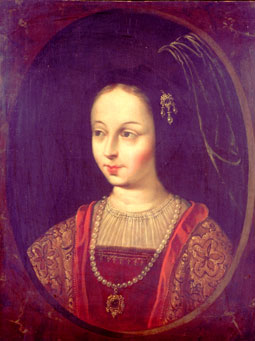Beatriz Galindo, also known as Beatriz Galindo “La Latina,” was a notable Spanish humanist, educator, and writer. She lived during the late 15th and early 16th centuries, born around 1465 and passing away in 1534. Galindo was one of the most renowned intellectuals of her time and made significant contributions to education and literature.
Galindo was born in Salamanca, Spain, and received a comprehensive education, which was uncommon for women during that era. She mastered Latin and Greek, becoming proficient in classical languages and literature. Her exceptional intellect and linguistic abilities earned her the nickname “La Latina.”
Galindo gained recognition for her scholarly pursuits and became a prominent figure in the court of Queen Isabella I of Castile and King Ferdinand II of Aragon, the Catholic Monarchs. She served as a tutor to their children, including the future Queen Joanna of Castile, and was highly esteemed for her teaching skills and erudition.
In addition to her teaching career, Galindo was a prolific writer. She composed various works in Latin and Spanish, covering a wide range of topics including theology, philosophy, history, and poetry. One of her most famous works is “Los Diálogos de la Mujer” (Dialogues of the Woman), which addressed the role of women in society and advocated for their intellectual and moral education.
Beatriz Galindo’s legacy as a pioneering female scholar and educator remains significant in Spanish history. She defied the societal norms of her time by pursuing scholarly endeavors and promoting education for women. Galindo’s contributions to literature, education, and women’s rights have earned her a lasting place in Spanish cultural history.
She is responsible for the foundation of the Latina hospital (1499-1507) and the convents or monasteries of the Concepción Francisca and the Concepción Jerónima (where she was buried), in Madrid. Latin poems and some Commentaries on Aristotle are attributed to her. She wrote poetry in Latin and had studied theology. In Madrid the area which is called “La Latina” is because of her.
This job as a tour guide, does have some interesting moments. This part about Beatriz Galindo what you just have read, is what was said during a long time. But they started to investigate a little bit more. Also because they wanted to put a medallion on the main square of Salamanca in honor of Beatriz Galindo. And they found out that it is not in the least the story we always thought it was. Read this next part.
Her destiny was to enter a convent, and to lower the dowry they would have to pay for her admission, they made her learn Latin. However, in 1486 she was summoned by Queen Isabella the Catholic to the court. There she worked as a “chamber maid” or “maid” to the queen, mainly in charge of the clothing in Isabella’s chambers. She received a modest salary which she supplemented with small gifts from the queen, like the rest of the maids. She became “very private and beloved by the king and queen,” according to the chronicler Lucio Marineo Sículo, who also stated that she was nicknamed “La Latina” because she spoke the language fluently. This nickname was also used by other women at court. She married the artillery captain and advisor to the Catholic Monarchs, Francisco Ramírez de Madrid, in 1491. Francisco was a widower and almost twice Beatriz’s age.
Beatriz gave birth to two sons. The queen forced Francisco Ramírez to favor these children in his will, especially Fernán, to the detriment of the six children from his previous marriage. Her sons entered the service of the Prince of Asturias (Juan) as pages, and upon his death, they passed into the royal household. The king and queen donated some buildings in Écija to Beatriz. Francisco Ramírez died in 1501 while fighting against the Mudéjars near Marbella.
The king and queen granted Beatrice numerous favors: the forgiveness of all her debts to the royal treasury; that all lawsuits against her would henceforth be heard by the royal Council; recognition of nobility for the entire family; and, for Fernán, the holdings of the fortresses of El Pardo and Salobreña and the title of Commander of the Order of Santiago. The Crown’s favoritism toward Fernán has led some historians to believe that the child could actually be the son of King Ferdinand, the fruit of an extramarital relationship with Beatrice that, when it resulted in her pregnancy, led to her quickly marrying off to a trusted courtier.
Beatriz was so wealthy thanks to her marriage that she was able to lend the monarchs money. Upon the queen’s death, Beatriz formed part of the retinue that took her body to Granada. Beatriz’s influence at court declined upon the king’s death and his grandson Charles I succeeded him.
Beatriz carried out her husband’s last wish to found a hospital, which was called the Hospital de la Latina. This is why a neighborhood in Madrid is called La Latina. She also founded the convents or monasteries of the Concepción Francisca and the Concepción Jerónima, all in Madrid. Her sons died before her and when she died in 1535, she had 14 living grandchildren.

